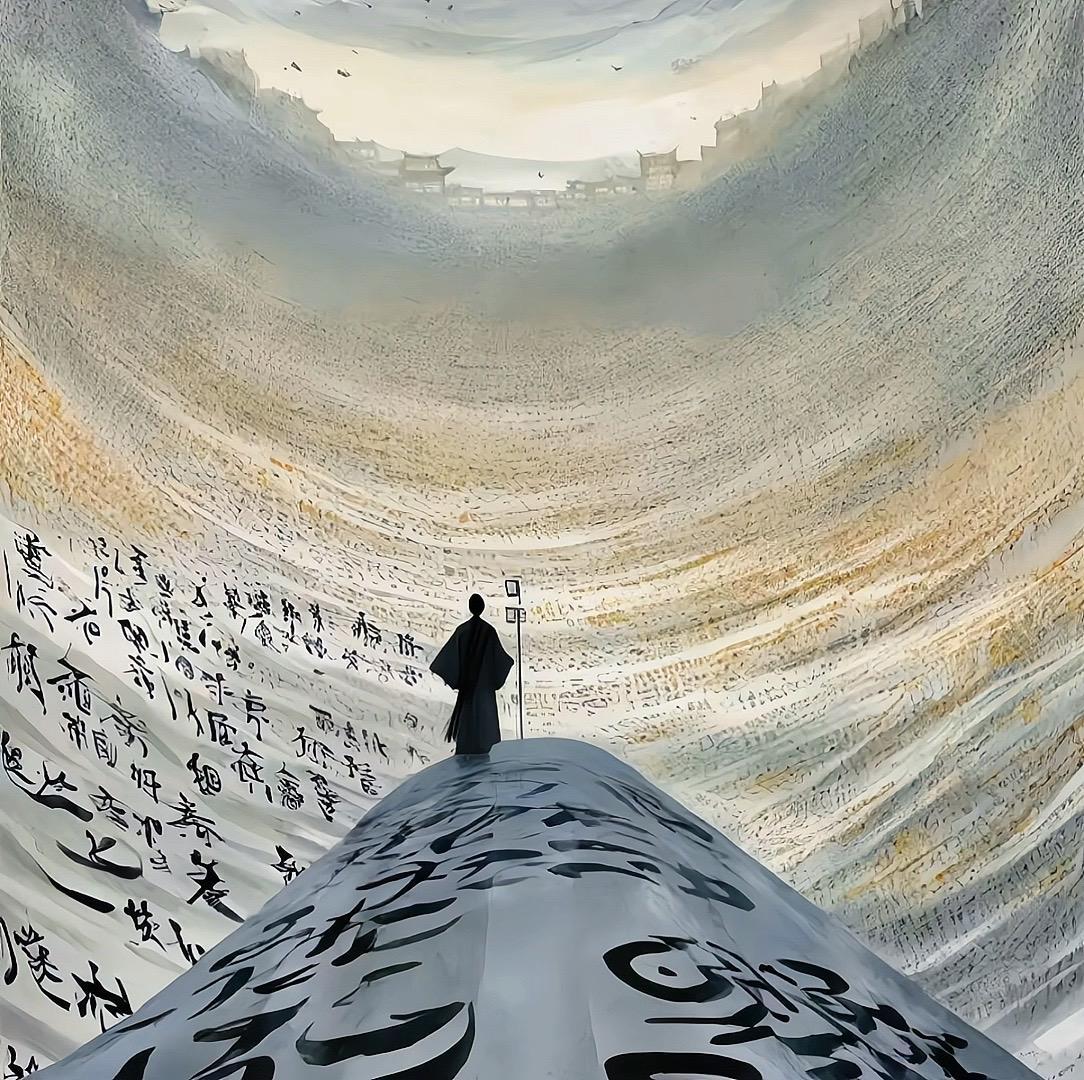In the heart of a bustling city, nestled among tall skyscrapers and neon lights, there was a quiet, almost hidden event that attracted the attention of many—a Taoist Culture Exhibition. Held in a grand, traditional hall adorned with ancient Taoist artifacts and symbols, this exhibition was an oasis of tranquility amidst the fast-paced modern world. It was here that a young, ambitious jewelry designer named Li Wei unveiled her latest creations, which would go on to leave an indelible mark on the world of fashion and spirituality.
Li Wei was no ordinary jewelry designer. Born into a family with deep Taoist roots, she had spent her childhood immersed in the teachings of the Tao, learning about the Yin and Yang, the Five Elements, and the Eight Trigrams from her grandfather, a Taoist priest. Her upbringing in such an environment instilled in her a reverence for the natural world and an understanding of the profound balance that exists between all things.
Her journey into the world of jewelry design began at an early age, when she was drawn to the beauty and intricacy of traditional Taoist symbols. As she grew older, Li Wei studied art and design at one of the country’s most prestigious universities, but her heart always remained with the Taoist traditions that had shaped her worldview. She saw the potential to blend the ancient wisdom of Taoism with modern aesthetics, creating jewelry that could not only serve as adornment but also carry deep spiritual significance.
The Birth of the Taoist Jewelry Collection
Li Wei’s latest collection, which she introduced at the Taoist Culture Exhibition, was a true reflection of her vision. The collection, titled “Yin-Yang and Bagua”, was a fusion of timeless Taoist principles and modern jewelry design. Each piece in the collection was a work of art, beautifully crafted, and rich in cultural meaning. What set these pieces apart from traditional jewelry was the profound spiritual energy embedded within them, a direct reflection of the Taoist teachings that Li Wei held dear.
The Yin-Yang Collection
At the heart of her collection was the Yin-Yang Series, inspired by the ancient Taoist symbol of Taiji—the circular symbol that represents the duality of Yin and Yang. Li Wei’s design was a delicate balance of gold and silver, intricately woven together in the shape of a circle, with a swirl of black and white enamel symbolizing the eternal dance of opposites. The necklace pendants, bracelets, and rings in this series embodied the concept that everything in the universe is interconnected, and true harmony is found in balancing these contrasting forces.
The Yin-Yang symbol, a cornerstone of Taoist thought, emphasizes that light and dark, masculine and feminine, active and passive, and life and death are not opposing forces, but complementary ones. Li Wei’s jewelry captured this duality through the use of different materials and techniques, creating pieces that symbolized the unity and harmony between opposites.
When she unveiled this collection at the exhibition, the visitors were drawn to its simplicity yet deep spiritual resonance. Many admired the way Li Wei had managed to encapsulate a fundamental Taoist teaching into wearable art. The Yin-Yang Ring, for example, was designed to fit perfectly on the finger, symbolizing the wearer’s connection to the cosmos and their ability to navigate the balance between conflicting aspects of life.
The Bagua Collection
Another standout from her collection was the Bagua Series, which featured jewelry inspired by the Eight Trigrams (Bagua)—a fundamental concept in Taoism and Chinese philosophy. The Bagua represents the eight primary forces of the universe, expressed through a combination of lines that are either broken or unbroken, symbolizing Yin and Yang. These forces are interconnected and dynamic, always shifting and changing in a continuous cycle.
Li Wei’s interpretation of the Bagua was both elegant and contemporary. She designed pendants, earrings, and bracelets with intricate patterns of the trigrams, each one representing a different quality, such as heaven, earth, fire, water, thunder, wind, mountain, and lake. To create the perfect balance, Li Wei combined jade and obsidian, two stones revered in Taoist practices for their grounding and protective qualities.
Jade, especially, has been valued in Taoism for centuries, symbolizing purity, wisdom, and immortality. It is said to bring protection and harmony to its wearer. Li Wei used jade in the center of her Bagua pendants, with the surrounding trigrams engraved in sterling silver. Each piece was not only a beautiful accessory but a tool for personal transformation and spiritual alignment. Wearing the Bagua symbol was believed to help balance the energies within the body and attract good fortune.
Visitors to the exhibition marveled at the precision with which Li Wei had captured the ancient wisdom of the Eight Trigrams. The jewelry became more than just an adornment; it was a reflection of one’s spiritual journey and connection to the universe. For many, owning a piece from the Bagua Collection was a way to feel aligned with the natural forces of the world.
The Spiritual Connection Behind the Jewelry
As people gathered around her booth at the exhibition, Li Wei noticed a growing interest not just in the beauty of her jewelry, but in the stories behind each piece. Many of the visitors were not merely seeking a stylish accessory; they were looking for a deeper connection to the Taoist philosophy that had shaped her designs. It was clear that her work was resonating with those who felt a spiritual need in their lives—a desire for balance, peace, and protection.
Li Wei explained that, for her, each piece of jewelry was not just a physical object, but a conduit for spiritual energy. The process of designing and crafting each item involved deep meditation and reflection on the Taoist teachings. She infused her jewelry with the intention of helping the wearer connect to the deeper aspects of the universe, providing a tool for inner peace and balance. Each item was a reminder to live in accordance with the Tao—to go with the flow of life, to accept the ebb and flow of circumstances, and to find serenity in the present moment.
Her jewelry, she explained, could serve as both a spiritual anchor and a protective shield. The Yin-Yang and Bagua symbols, when worn with intention, could help their owners navigate life’s challenges, balance their emotions, and align themselves with the natural order. It wasn’t just about external beauty—it was about the internal transformation that the jewelry could inspire.
The Rise of Taoist-Inspired Jewelry
Li Wei’s collection was an instant success. The Yin-Yang and Bagua series became sought-after items, not only by Taoist practitioners but by people from all walks of life who were seeking balance in their busy, often chaotic worlds. The jewelry found its way into the hands of business professionals, spiritual seekers, and even tourists looking to take home a piece of China’s rich cultural heritage.
One of the most touching stories Li Wei received came from a young woman named Mingzhu, a rising star in the corporate world who had recently been feeling overwhelmed by the pressures of her job. Mingzhu purchased a Yin-Yang Necklace from the collection after attending the exhibition. A month later, she wrote to Li Wei, telling her how the necklace had become a constant source of peace and clarity. Whenever she felt stressed or out of balance, she would touch the pendant and remind herself of the need for harmony between her professional and personal life.
For Mingzhu, the jewelry was more than just an accessory; it had become a spiritual guide, helping her reconnect with the wisdom of Taoism in moments of difficulty. She credited the necklace with helping her navigate a particularly challenging project, bringing her the inner strength to stay calm and find creative solutions.
Stories like Mingzhu’s were becoming more common, and Li Wei was deeply moved by the way her jewelry was helping others on their spiritual journeys. Her pieces were not just fashionable—they were spiritual tools, worn by individuals seeking to align their energy with the flow of the Tao.
A Legacy of Taoist Wisdom
As the years passed, Li Wei’s collection continued to grow. She expanded her designs to incorporate other Taoist symbols, such as the Five Elements, the Immortals, and even the Daoist Seal. Each series of jewelry had its own distinct energy, but all carried the same underlying message: the belief that true beauty, balance, and peace come from living in harmony with the Tao.
Li Wei’s work soon became recognized not just in China but around the world. Her creations were featured in galleries, spiritual boutiques, and exhibitions dedicated to Eastern philosophy. Through her jewelry, she was able to bring Taoist wisdom into the modern world, helping people from all walks of life access the teachings of Taoism and embody its principles in their everyday lives.
In the end, Li Wei’s jewelry collection became much more than a commercial venture. It became a bridge between the ancient and the modern, a channel through which the timeless wisdom of Taoism could be shared, worn, and experienced. Through the elegance of design and the depth of meaning, Li Wei’s Taoist-inspired jewelry helped countless individuals reconnect with their spiritual essence and the natural flow of the universe.



